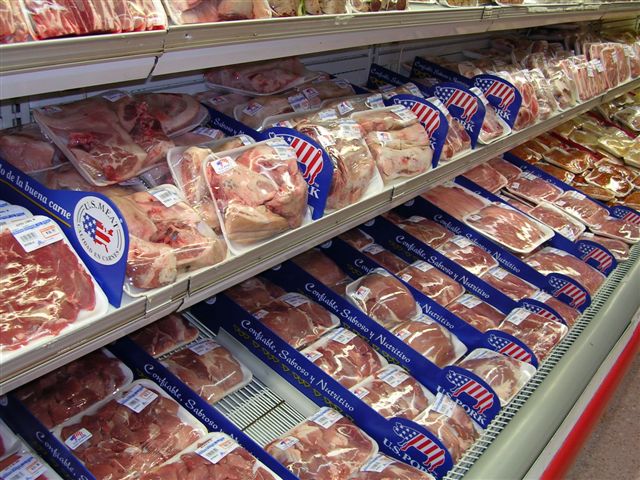Demand for U.S. beef soars; pork exports improve
First quarter results do not reflect impact of recent COVID-19 lockdowns in China that have slowed product movement, forced restaurants to suspend service.
May 5, 2022

U.S. beef exports soared to another new value record in March, according to data released by USDA and compiled by the U.S. Meat Export Federation. March pork exports were the largest so far this year but well below the record-large totals posted in March 2021. Lamb exports continued to gain momentum in March, reaching the third largest monthly volume on record and the highest value in nearly eight years.
Fueled by mainstay markets
Beef exports totaled 126,285 metric tons in March, up 1% from a year ago and the third largest on record, while value climbed 33% to a record $1.07 billion. First quarter exports increased 6% to 353,852 mt, valued at just over $3 billion (up 41%).
"Global demand for U.S. beef has eclipsed anything I have seen in many years in the meat business," says USMEF President and CEO Dan Halstrom. "While this momentum is fueled by mainstay markets such as South Korea, Japan and Taiwan, demand is also very strong in China/Hong Kong and key Latin American markets, while exports to the Middle East have rebounded impressively."
Halstrom cautioned that first quarter results do not fully reflect the impact of recent COVID-19 lockdowns in China that have slowed product movement and forced many restaurants to suspend or limit service. These obstacles are likely to have a greater impact on April and May export data. He also noted that while beef demand has been very resilient, inflation represents a potential headwind.
"Consumers throughout the world have shown how much they value the quality of U.S. beef, but disposable income is under increasing pressure as they pay more for energy and other daily needs," he says.
Pork exports to Mexico, Dominican Republic on record pace
March pork exports were 222,581 mt, the largest since November but nearly 25% below the record volume achieved a year ago. Export value was $615.3 million, also the highest since November but down 23% year-over-year. First quarter pork exports fell 20% from a year ago to 629,928 mt, valued at $1.71 billion (down 17%). Pork exports to Mexico and the Dominican Republic raced to a record pace in the first quarter and South Korea posted a strong increase in export value, but shipments to most destinations were below last year.
"While pork exports were down significantly from last year's record, we saw some encouraging trends in the March results," Halstrom says. "U.S. pork commanded a higher price per pound than a year ago, with outstanding demand from Mexico and value growth in key markets such as South Korea and the Dominican Republic. The stronger U.S. dollar creates more price pressure in some destinations, but this will be offset to some degree by the narrowing price gap between U.S. and European pork."
Halstrom added that pork, beef and lamb exporters continue to face logistical obstacles and delays when moving product overseas. The situation is especially challenging for chilled meat shipments to key Asian markets.
Upward trend for lamb exports continues
With growth to Mexico, the Caribbean and the Philippines, U.S. lamb exports continued to gain momentum as March shipments increased 75% from a year ago to 1,906 mt, the largest volume since 2011 and the third largest on record. Export value nearly doubled to $2.88 million, up 95% and the highest since 2014. First quarter lamb exports increased 54% from a year ago to 5,019 mt, while value climbed 72% to $7.35 million. Muscle cut exports grew at an even faster pace, up 80% from a year ago in volume (492 mt) and 88% in value ($3.04 million).
A detailed summary of first quarter export results, including market-specific highlights, is available from the USMEF website.
Source: U.S. Meat Export Federation, which is solely responsible for the information provided, and wholly owns the information. Informa Business Media and all its subsidiaries are not responsible for any of the content contained in this information asset.
About the Author(s)
You May Also Like



